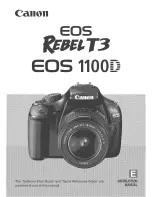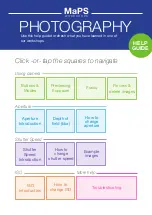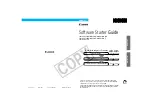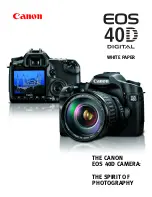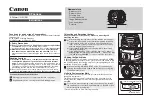
HP 912 Digital Camera User’s Guide
134
Glossary
telephoto
A lens that has a longer focal length and narrower field of view (includes less subject area) than a normal
lens. A telephoto lens makes a subject appear larger and/or closer than does a normal lens at the same
camera-to-subject distance. See also “wide angle” on page 135.
thumbnail
A miniature of the original image that is large enough to allow you to identify the image, but is small
enough to allow you to see multiple images in a single software window. Thumbnails are used to display
on-screen images of the contents of a digital camera’s memory card.
TIFF
Tagged Image File Format. A bitmapped file format for images. TIFF does not compress the image. TIFF
files are supported by many programs and can also be used on many types of computers. See also “file
type” on page 127 and “JPEG” on page 129.
Timelapse image type
The image type setting on the camera that captures a slow process with a series of images. You change the
image type by pressing the image type button next to the status LCD. See also “image type” on page 128.
timer
A device that lets you take a self portrait or be in a group picture. When you press the shutter release
button or remote trigger, the image capture is delayed by a length of time specified by the timer delay.
See also “timer delay.”
timer delay
The amount of time the camera waits to take the picture when using the timer.
timer LED
The Light Emitting Diode on the front of the camera that flashes to indicate the countdown of the timer
delay when you have set the timer and then pressed the shutter release button or remote trigger.
timer mode
This mode is set by pressing a status LCD button on top of the camera and determines how the shutter
release button will be triggered.
timer mode button
The status LCD button on the top of the camera that you press to set the timer mode.
timer mode icon(s)
An icon or set of icons that appears in the status LCD and shows the current timer mode.
Tv
See “Shutter Priority (Tv) exposure mode” on page 132.
TV (video) connection
The connector into which you plug the video cable to connect the camera to a television (TV). See also
“NTSC connection” on page 130 and “PAL connection” on page 131.
unload
The process of copying images from the memory card directly to the computer.
unmark
The process of deselecting images in the camera that have previously been marked.
unprotect
The process of removing the protection on images in the camera so that they can be deleted.
USB
Universal Serial Bus. An interface for connecting peripherals, such as digital cameras, to a computer.
USB Mass Storage Device Class
A Microsoft Windows device class that lets the operating system display the files in a camera as though
they are stored on a separate, additional computer device similar to a disk drive.
video cable
The wire that can be used to connect the camera to a television.























